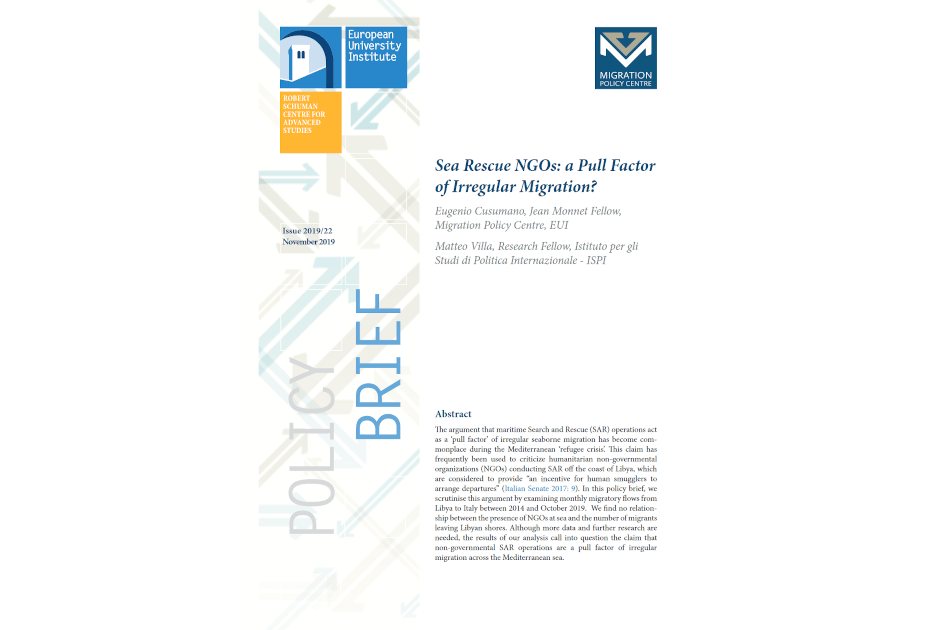The argument that maritime Search and Rescue (SAR) operations act as a ‘pull factor’ of irregular seaborne migration has become commonplace during the Mediterranean ‘refugee crisis’. This claim has frequently been used to criticize humanitarian non-governmental organizations (NGOs) conducting SAR off the coast of Libya, which are considered to provide “an incentive for human smugglers to arrange departures” (Italian Senate 2017: 9). In this policy brief, we
scrutinize this argument by examining migratory flows from Libya to Italy between 2014 and October 2019. We find no relationship between the presence of NGOs at sea and the number of migrants leaving Libyan shores. Although more data and further research are needed, the results of our analysis call into question the claim that non-governmental SAR operations are a pull factor of irregular migration across the Mediterranean sea.
NGOs’ Involvement in Maritime Rescue
The large number of casualties at sea has turned the Central Mediterranean corridor into the world’s deadliest migratory route (IOM 2019, UNHCR 2019).
In response to the rising number of casualties, Italy launched operation Mare Nostrum in October 2013, using Navy and Coast Guard assets to rescue migrants in international waters off the Libyan coast. Criticized as “an unintended pull factor encouraging more migrants to attempt the dangerous sea” (House of Lords 2016: 18), Mare Nostrum was suspended after one year. Ensuing European law enforcement and military missions Triton, Themis and EUNAVFOR Med have largely refrained from conducting proactive SAR (Cusumano 2019a). The subsequent gap in rescue capabilities was bridged by a host of civil society organizations, which assisted over 115,000 migrants between 2014 and October 2019 (Cusumano 2019b, Cuttitta 2018).
This is a part of a policy brief published by Eugenio Cusumano and Matteo Villa.
